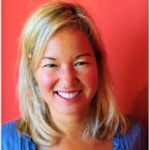
Ryan Hurley
Growing Future Artists (& Vegetables): Lessons from a Community Garden Project
Posted by Jul 28, 2011 0 comments

Ryan Hurley
The goal of the 53rd Street Community Garden was to create a sustainable community garden with colorful artistic components and outdoor classrooms. Students would utilize this outdoor space to discover scientific exploration of plants, insects, and animals, while fostering a respect for the neighborhood.
Although this project is still pretty fresh and constantly evolving, we have seen an amazing community effort in building a space where education, cultivation, and neighborhood come together. It has been beautiful to have a place where teachers can bring their classrooms outside to plant vegetables, where community members tend to their plots and interact with the youth, and where two schools that rarely socialize now have some common ground.
We are currently working with the school on plans for developing a culinary arts program, installing a gazebo, and scheduling a community harvest event. We are excited about expanding the school/community garden model, which we’ve named Growing Great Gardens (3G), to other Milwaukee Public Schools.
Read More








Most Commented